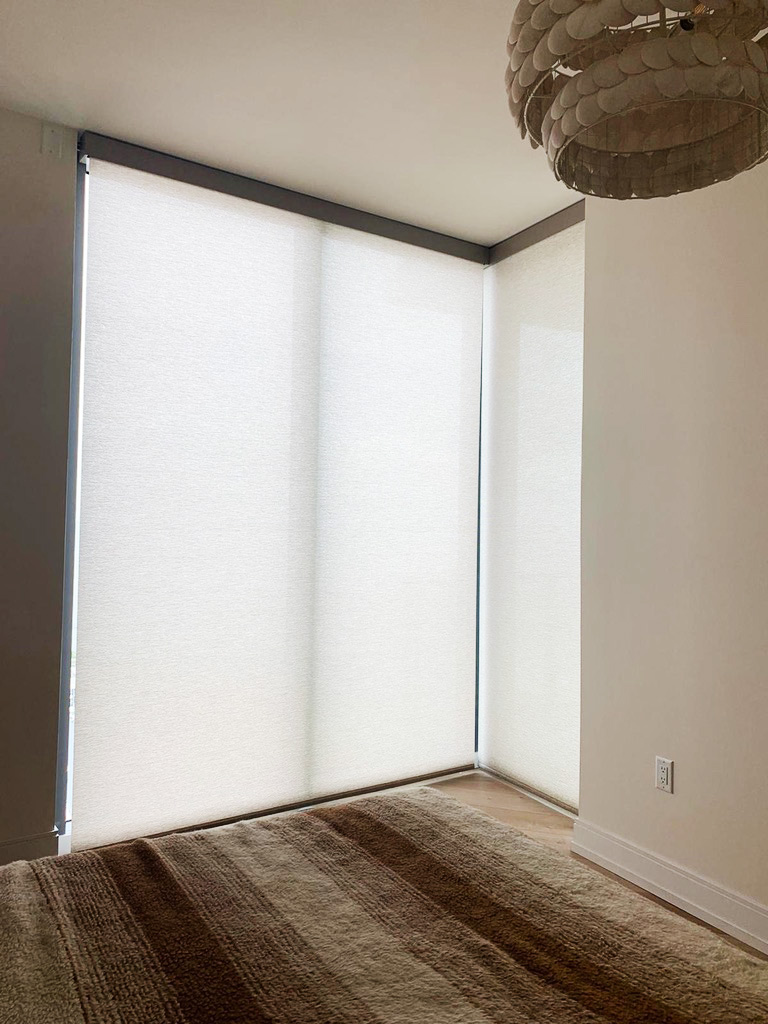

Summer is the perfect time for some sun and fun! Trips to the beach and days on the pier. But what about relaxing at home? There are some places where you get a little tired of the sun and that's ok!
At Hive, a premier home automation company in Tampa, we know that your privacy and cooling are paramount. We’re here to take shades to the next level. With automated shades, you can control your privacy and cool from the palm of your hand. Or set timers to block out the sun on the hottest days.
How much light is too much? Do you need sheer shades or blackout ones? How does the sun affect your home? In this article, we break down the key factors in choosing the right shades for you:
In homes that are severely exposed to the sun (large windows, patio doors, skylights, un-shaded windows), electricity bills may be high, or furniture may get sun-faded. Solar screens are the best choice for cooling down a room, cutting glare, or protecting furniture and floors.
Opacity means how opaque a shade is, while openness refers to how much light is allowed through the fabric. Both the openness and opacity are measured in percentages which represent the light that is allowed to come through the blinds. In other words, the higher the percentage, the more light is coming through, while the smaller numbers mean less light.
You can select different openness levels, depending on how many views, therefore light, you desire. A smaller openness percentage, 3%- 5%, means less light comes in which equals a darker room, which equals less view. A higher percentage of openness, 5%-20%, will give your room more light and a better view. Usually, a 5% openness is recommended for those who want to see out but screen out some sun and glare.
To maximize sun exposure through light screening, choose a 10-14% openness factor. Note that a plain weave fabric in a darker color will give you a better view than busy patterns which create more obstruction. Lighter colors in a plain weave will reflect the light and add some brightness to the room. In contrast, darker, plain weave fabrics will absorb some light, creating a slightly darkened room.
Remember that there is no perfect solution as there is a give and take with view/light and coolness/protection. You need to decide which balance works for you. Caution: solar screens DO NOT provide privacy at night, so you will need an additional window treatment if you don’t like nosey neighbors. Here is an easy visual to clarify openness levels.

Solar window treatments are sleek and minimal but can do an effective job of regulating light and temperature levels. For many people, who want much light to filter through, and just have some privacy from outside eyes, they would be happy with anything from a 5% to 10% openness rating.
Here are the gradient categories when talking about opacity for various window treatments.
Sheer window treatments allow the most light to filter in but do reduce some glare with little privacy. Sheers preserve your view, while their softness, grace, and casual appeal make them popular.
Semi-sheer window treatments diffuse light but offer limited privacy. Semi-sheers are our least popular window treatment and provide no benefit. Clarify whether you need a view or privacy and choose the specific light you require.
Choose a semi-opaque window covering if you know you want privacy and require some bit of light to stream through the window. Your view will be very restricted but your room will not be dark.
Double-cell, light-filtering shades are ideal for privacy. Pleated, roman shades and drapery with liners are also good options. Semi-opaque window treatments are very popular and versatile with many light filtering choices.
Opaque and room darkening are used interchangeably and if you see the description, “room darkening,” be aware that room-darkening fabric does not block out ALL light, as light seeps around the gaps, about 1/2″ on each side.
We added blackout as a category for a true blackout shade that must have “something” really blocking all light – a mylar interior lining, an acrylic backing with a blackout liner, and a 3-ply vinyl material or an extra layer of an additional window darkening treatment. Because of these extra blocking materials, these window treatments create a dark and somber room that is truly blackout.
No matter the size or gradient, Hive is here to provide you with the best shades and service possible. Call Hive for your free consultation and learn more about how to automate your shades today. Have any questions? Reach us by calling at 813-575-HIVE or reaching us through our contact page. Check out more installations behind-the-scenes on our Youtube Channel.